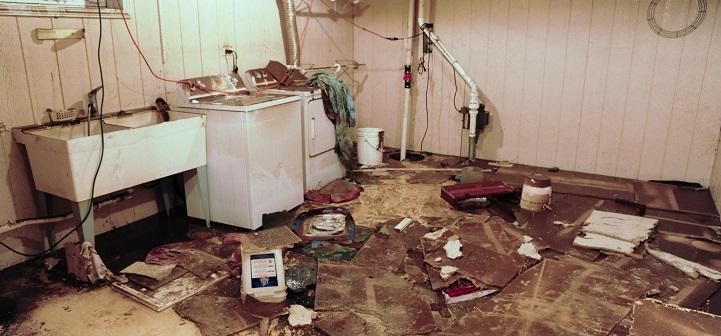Appliances
What to Know About Water-Damaged Appliances
What to Know About Water-Damaged Appliances
Rule No. 1: Don’t turn them on without taking precautions
When you return home after a flood, your instinct might be to rush in and check on the extent of the damage. But don’t—appliances might have shifted and damaged electrical or gas lines, putting you at risk.
“If your gas range or water heater has shifted and the gas lines are damaged, you may smell a rotten-egg odor—a sign that gas is leaking,” says Jim Nanni, the engineer who oversees CR’s testing of large appliances. Leave your home and call 911.
“Whatever you do, don’t switch on the lights, use electronic devices, or create open flames by lighting a match or turning on a gas range,” Nanni cautions. “Any of these can ignite the leaking gas.”
If there’s standing water in your house and the electric service is still running there, contact your utility company to turn the power off.

Water can quickly ruin your appliances and heating and cooling system(s). The extent of damage a flood causes depends on which parts were submerged and for how long, and whether there’s contamination from sewage or mold.
“Even if your appliances and heating and cooling equipment dry out, it’s likely that components were damaged or should be replaced for safety and reliability concerns,” Nanni says.
Generally, it makes more sense to replace water-damaged appliances, given the high cost of repair parts and labor. There are exceptions: “For example, the outdoor condensing unit for your central AC or heat-pump system may only require minimal repair, as long as the sealed refrigerant system wasn’t damaged,” Nanni says.
3 Important Precautions
To keep yourself and your family safe as you assess the damage:
1. Wait for a Pro to Inspect
“One of the worst things homeowners can do after a flood is attempt to air-dry their appliances and then turn them on,” says Chris Granger, vice president of Sears Home Services, which repairs almost 7 million appliances a year. “This can cause the appliance to short-circuit, or worse, shock the user, resulting in serious and life-threatening injury if there’s moisture in the electrical components.”
If water has flooded a room and appliances came into contact with the water, the best approach is to wait until the water recedes, then disconnect the appliances from power sources. Never do this while standing in water. “Do not reconnect appliances until a qualified technician has inspected them,” Nanni adds.
2. Don’t Turn On the HVAC
Turning on your cooling (or heating) equipment can spread mold throughout the duct work and your home, according to the Centers for Disease Control and Prevention’s guide to re-entering a flooded home.
Have an HVAC pro experienced in mold cleanup inspect your system before you turn it on. “Professional cleaning will kill the mold and prevent later mold growth,” according to the CDC. If your HVAC system is deemed safe, once you get it up and running you can use it to remove excess moisture from your home.
3. Beware of Mold Inside Your Refrigerator and Freezer
If the fridge or freezer is still running when you get home, that’s a good sign. But it doesn’t mean the appliance is in the clear.
Insulation that gets wet will dry slowly once the appliance is plugged in and running, making it susceptible to mold.
You could be in luck if the water rose just several inches in your kitchen. “The refrigerator’s compressor and condenser are sealed and—unless it’s a built-in model—those parts are located at the bottom of the refrigerator,” says Joe Pacella, the engineer who runs CR’s tests of refrigerators and freezers. “That means the insulation is probably dry, since it’s higher up.” (The insulation in a chest freezer is probably wet because it’s much closer to the floor than a refrigerator’s).
Water and ice. A refrigerator’s water dispenser and icemaker are hooked up to your water line. So if you’ve been without water or under a boil alert, you’ll want to change your refrigerator’s water filter, says Greg Crite, manager of GE Appliances’ Technical Assistance Group. He also recommends several other steps to protect your health: Throw out your ice, flush the dispenser for 3 to 5 minutes, run the icemaker for an hour, and wash and sanitize the bins.

